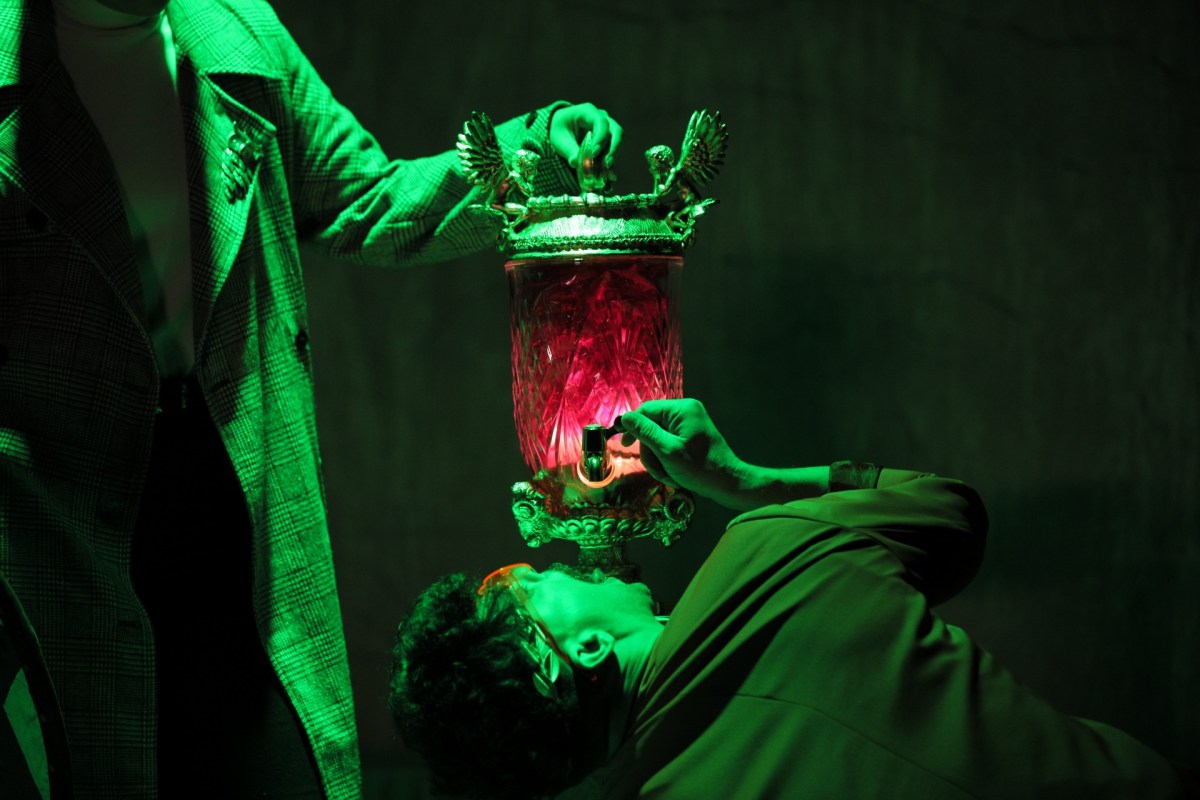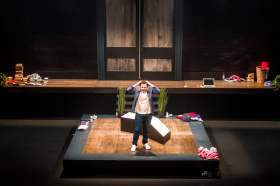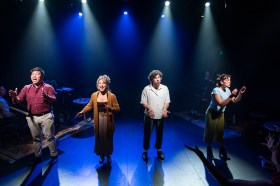Death in the Pantheon – written and directed by James Hartley and currently playing at the Flight Path Theatre – certainly has potential.
The premise is an interesting one: a murder mystery set among the pantheon of Greek gods. When one of the gods, Hephaestus, is murdered, Athena plays detective and embarks on a mission to unveil the killer.
With suspicions high and infighting taking hold, the gods’ foibles soon become apparent. It seems envy, hate, lust, pride and all manner of unedifying behaviour is not only the domain of mere mortals.
But while the premise is intriguing, several problems plagued this Upper Crass Theatre Company production on opening night.
Before the play, a brief announcement advised theatregoers that we were fortunate to have the director appearing on stage. What wasn’t mentioned was that actor Cam Ralph (billed as the character of Poseidon) was absent and that Hartley would be playing his role for the night, with script in hand.
While it’s arguably acceptable to see a script on stage if an actor has dropped out, no understudy exists and another performer must unexpectedly cover the role, this scenario should always be clearly explained to an audience beforehand. Otherwise, we end up wondering what’s going on and why an actor is still on book at opening night.
Another issue was the play’s runtime. In promotional material and on the Flight Path Theatre website, Death in the Pantheon is listed as having an 80-minute runtime, with no interval. During the aforementioned announcement, it was suddenly revealed to be 110 minutes. In the end, it was 120.
This is too long to run straight through with no interval – except for those with cast iron bladders, who don’t mind being cramped into a small space with no respite for two hours. The Flight Path is a small theatre and space is at a premium. In some seats, it’s impossible to exit without asking a row of people to get up.
The runtime blowout also has ramifications for the narrative. It was architect Ludwig Mies van der Rohe who popularised the now famous saying ‘less is more’, but the maxim also has theatrical applications. It certainly does here. Some judicious editing would have resulted in a tighter, more compelling play.
Several other creative choices were questionable, most notably the cast’s accents. Who knew the Ancient Greek gods spoke mainly in plummy English accents and American drawls? One wonders whether cultural cringe is at play here. Perhaps it was decided that Australian accents aren’t good enough for the gods? Daniel Moxham, who plays Dionysus, is one of the few to proudly use an Australian accent and his performance doesn’t suffer for it (on the contrary, he is very good).
More attention to costuming would also have elevated the production.
Now, onto the positives – and this play does have several appealing aspects.
The lighting and sound are effective and serve the show well.
The performances are generally solid. Natasha Cheng acquits herself admirably as Athena – an important feat, considering the narrative largely hinges on her.
Susan Jordan plays a strong Hera, her considerable experience in New Theatre productions and elsewhere holding her in good stead.
Brenton Amies’ comic timing is up to the mark; he turns in an amusing, nuanced performance.
Director James Hartley, who, as mentioned, took on the role of Poseidon for the night, put in a strong showing. It isn’t easy to step into a role at short notice, but Hartley made a good fist of it. Hartley has considerable stage presence and a booming, powerful voice, which suited the character.
While the whole cast of 10 give creditable performances, it is perhaps Jessie Lancaster as Aphrodite who stands out as the star. Lancaster displays range and professionalism throughout and is observed to be in character even when the spotlight is not on her.
Overall, this drama/comedy is a play with some issues – but it does have its charms. It’s worth mentioning that the script is original, whereas many similar theatre companies choose to put on tried and tested “old faithful” productions.
Read: Exhibition review: Alphonse Mucha: Spirit of Art Nouveau, Art Gallery of New South Wales
Death in the Pantheon has already achieved some level of success. An earlier version, with much the same creative team and cast, saw it score a nomination for Best in Theatre at last year’s Sydney Fringe. Additional reworking of the production may see it achieve greater acclaim.
Death in the Pantheon
Upper Crass Theatre Company
Director and Writer: James Hartley
Assistant Director: Neil Parikh
Set Designer: Victor Kalka
Lighting Designer: Paris Paris
Props Designer: Merlin
Additional Props, Costume Sourcing: James Shepherd
Stage Manager: Marica Fumanti
Fight Choreographer: Tommy James Green
Marketing: Kevin Rodrigueza
Cast: Brenton Amies, Shiva Chandra, Natasha Cheng, Bendeguz Devenyi-Botos, Edward Frame, Susan Jordan, Jessie Lancaster, Daniel Moxham, Cam Ralph (James Hartley standing in on opening night), Dean Tuttle
Tickets: $35-$45
Death in the Pantheon will be performed until 22 June 2024 at the Flight Path Theatre, Marrickville.





